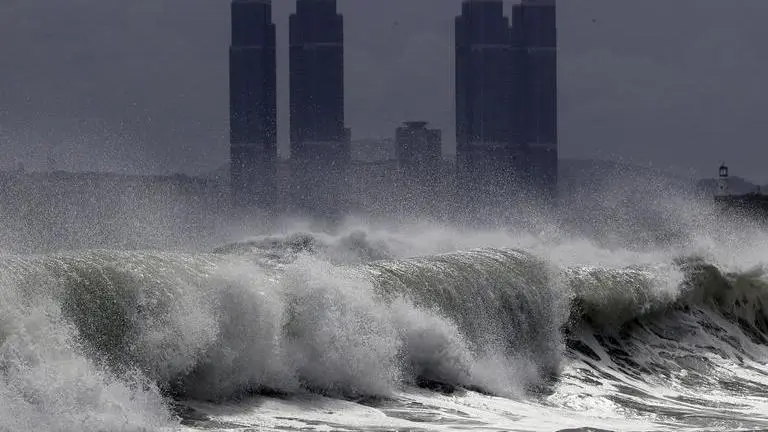Updated 27 August 2020 at 03:58 IST
South Korea braces for Typhoon Bavi as the strong storm approaches Seoul
South Korean authorities have placed several provinces in the country on high alert as Typhoon Bavi reached Mokpo, South Jeolla at 6:00 pm(local time) on Aug 26
- World News
- 2 min read

South Korean authorities have placed several provinces in the country on high alert as Typhoon Bavi reached Mokpo, South Jeolla at 6:00 pm (local time) on August 26 after raging havoc on the resort island of Jeju and other southern regions.
The typhoon is expected to move towards the capital city of Seoul and reach there by the morning of August 27. According to The Korean Herald, the typhoon will make landfall in Seoul by 5:00 am before moving north towards Hwanghae Province in North Korea.
Most powerful storm
As per reports, the Korean Meteorological Administration (KMA) has classified Typhoon Bavi as strong and has advised people to stay indoors as flights and ferry in the country remained suspended. Typhoon Bavi is the eighth of this season and is being considered one of the most powerful storms the country has seen so far in 2020.
Advertisement
The state weather agency has reportedly forecasted the storm to break the record set by Typhoon Maemi in 2003. Typhoon Bavi is currently moving at a speed of 30 kilometers per hour with the maximum wind speed of 43 meters per second.
Advertisement
According to reports, the KMA has projected heavy rainfalls in most parts of the country until August 28 to a level rising as high as 250 mm. Media reports suggest that commuting in the country has been majorly impacted as train services also disrupted after suspension of flights and ferries.
Trekking and camping sites are reported to have been restricted in the country with people asked to avoid national parks due to rising water levels. The Ministry of Environment is controlling the water release volume in dams to prevent flooding, as reported.
The South Korean government has set up camps to accommodate affected people and schools in Jeju and South Jeolla province have been shut as precautionary measures. The KMA has urged people to prepare for the worst as strong winds can affect power facilities, construction sites, and outdoor screening centers.
(Image Credit: AP)
Published By : Vishal Tiwari
Published On: 27 August 2020 at 03:58 IST
